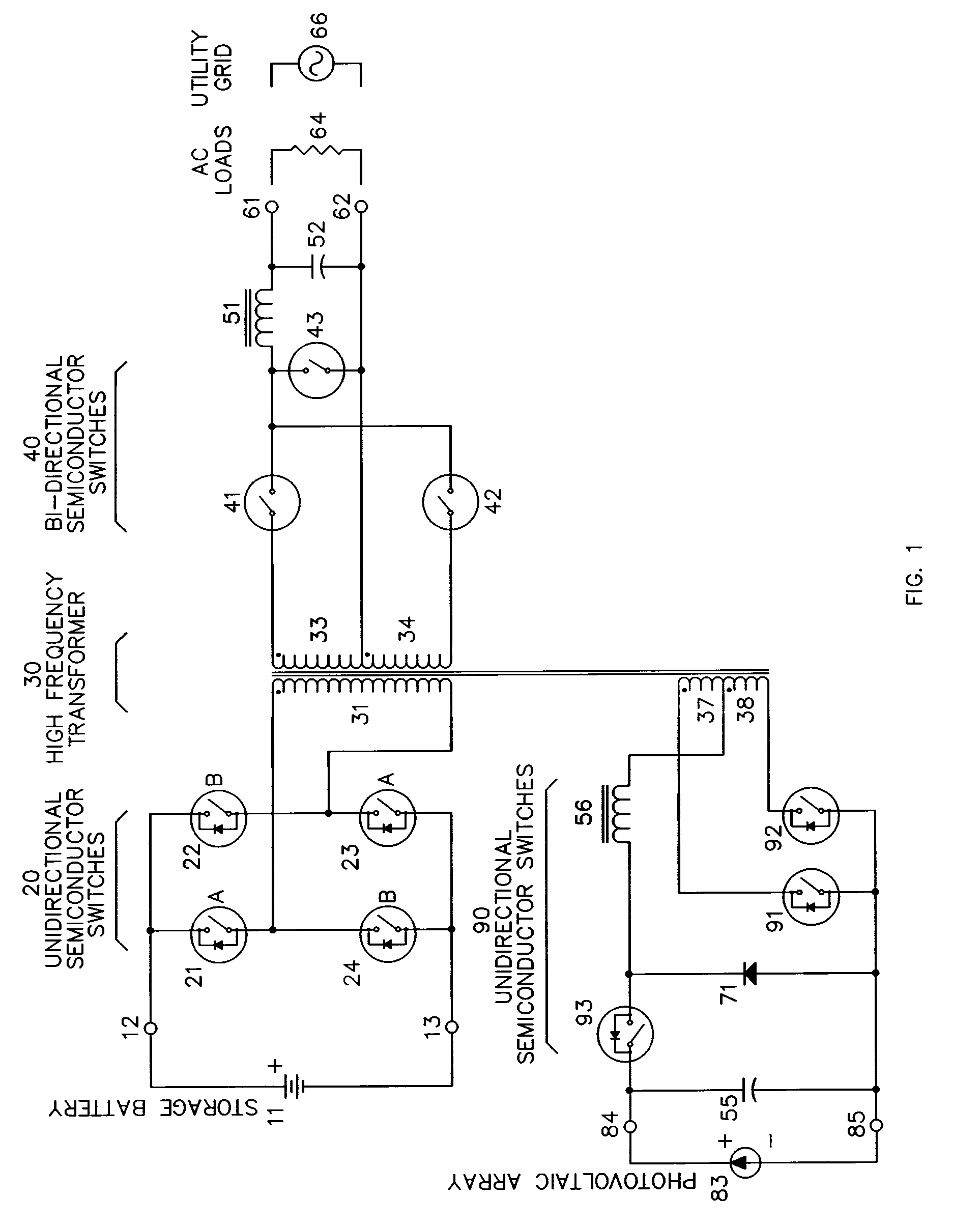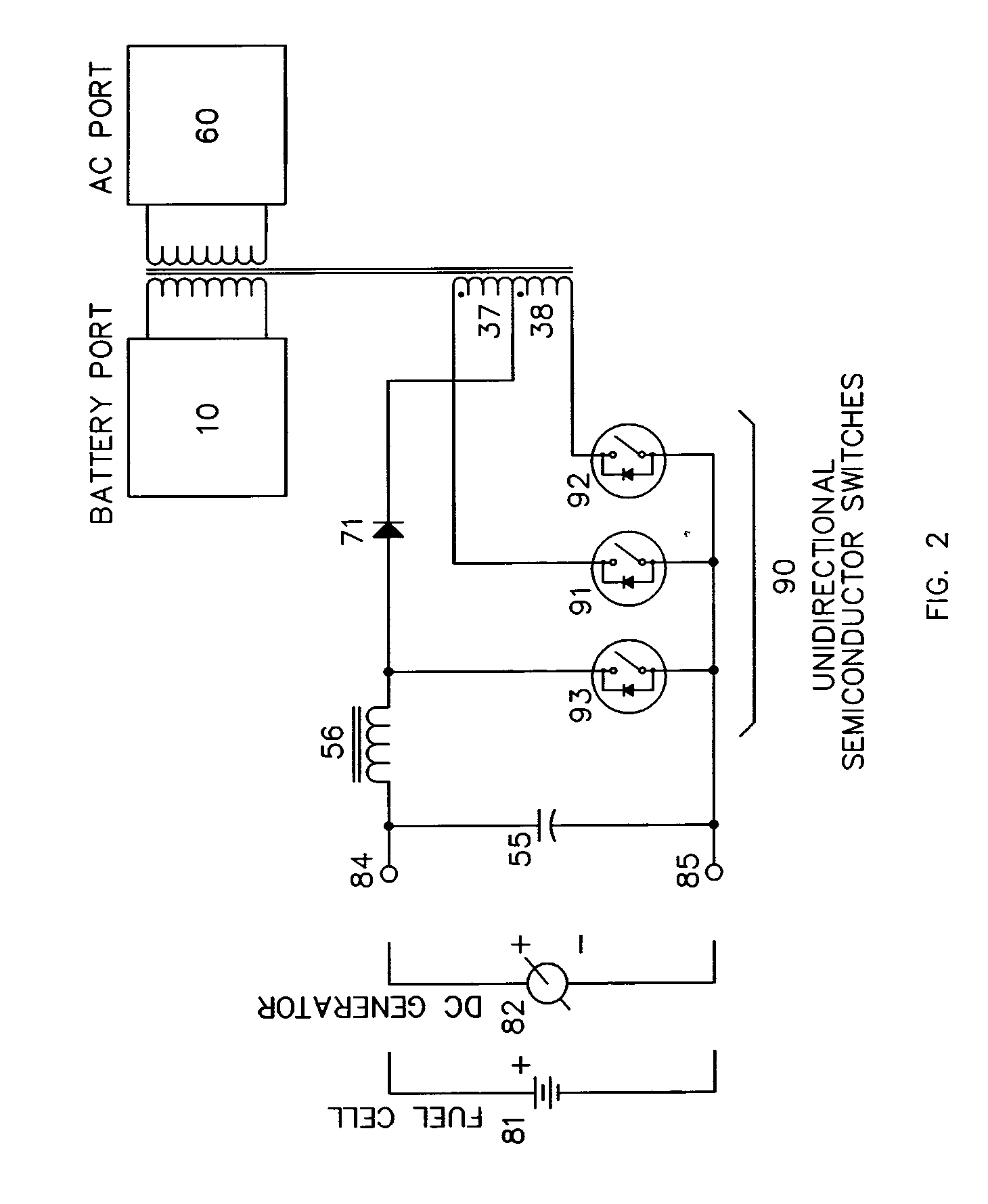Bi-directional multi-port inverter with high frequency link transformer
a high-frequency link transformer and multi-port technology, applied in the direction of emergency power supply arrangements, process and machine control, emergency supply, etc., can solve the problems of low conversion efficiency from renewable energy sources to battery-to-utility grid, low frequency transformer efficiency, and inability to adapt to the needs of the battery-centric energy system, so as to reduce the limitations of battery-centric energy systems, expand the potential capabilities of power converters, and reduce the effect of power consumption
- Summary
- Abstract
- Description
- Claims
- Application Information
AI Technical Summary
Benefits of technology
Problems solved by technology
Method used
Image
Examples
Embodiment Construction
[0011]FIG. 1 illustrates the preferred embodiment of the invention, a three-port power converter topology with one bi-directional battery port, at terminals 12 and 13, one four-quadrant AC port, at terminals 61 and 62, and one unidirectional renewable energy port at terminals 84 and 85. Two types of semiconductor switch elements are shown. Switches 21-24 and 91-93 have unipolar voltage blocking, unidirectional current control and bi-directional current conduction capabilities and are referred to as unidirectional semiconductor switches on all diagrams. Switches 41-43 have bipolar voltage blocking, bi-directional current control and bi-directional current conduction capabilities and are referred to as bi-directional switches in all diagrams. The battery port, at terminals 12 and 13, contains a typical, full-bridge arrangement of power switches 21-24 and is connected to winding 31 of high frequency transformer 30. Switch pairs 21, 23 and 22, 24 are alternately closed and opened at a h...
PUM
 Login to View More
Login to View More Abstract
Description
Claims
Application Information
 Login to View More
Login to View More - R&D
- Intellectual Property
- Life Sciences
- Materials
- Tech Scout
- Unparalleled Data Quality
- Higher Quality Content
- 60% Fewer Hallucinations
Browse by: Latest US Patents, China's latest patents, Technical Efficacy Thesaurus, Application Domain, Technology Topic, Popular Technical Reports.
© 2025 PatSnap. All rights reserved.Legal|Privacy policy|Modern Slavery Act Transparency Statement|Sitemap|About US| Contact US: help@patsnap.com



